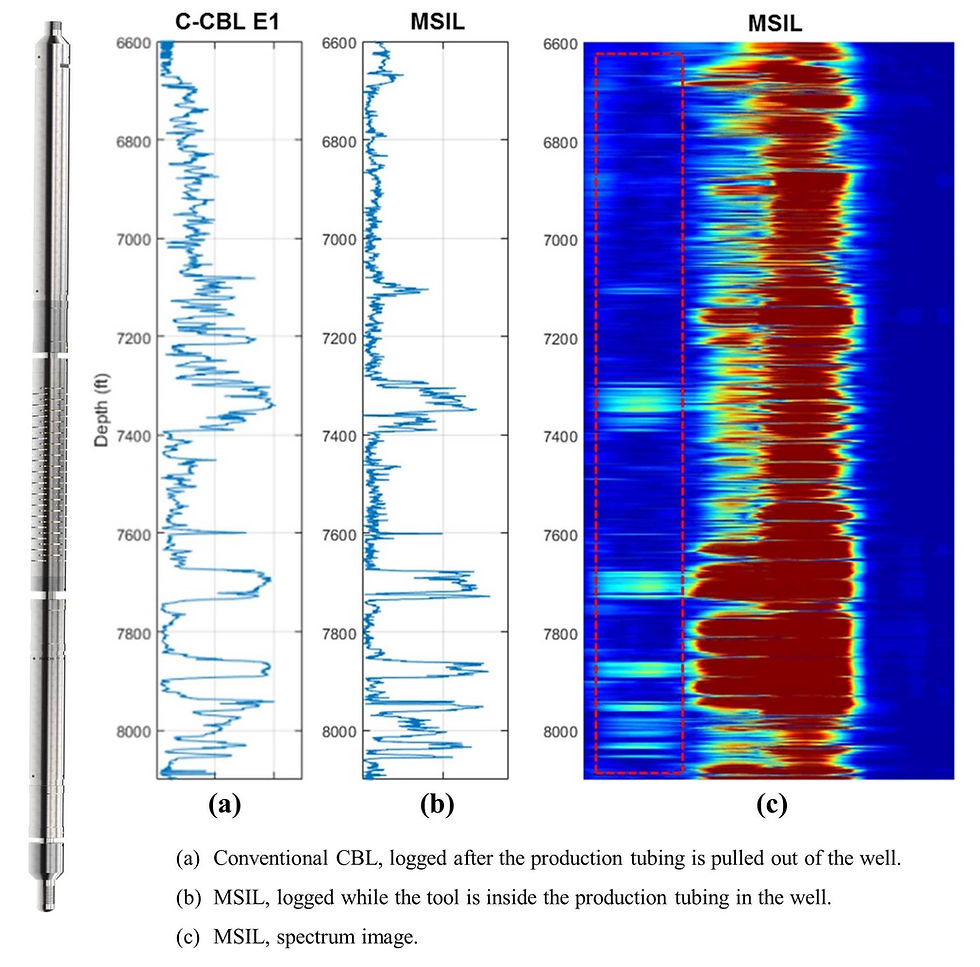Multi-String Isolation Logging: A Cost-Effective Solution for Plug and Abandonment
- Meredith Krebs
- Jul 9, 2019
- 2 min read
FORT WORTH, Texas – For years, the oil and gas industry has looked for a way to assess the isolation between geological intervals without pulling production tubing from the well. Until now, no technology could evaluate and determine cement bond quality and isolation without costly and time-intensive plug and abandonment processes. On May 14, 2019, two members from the Probe team, Jun Zhang and Pouya Mahbod, along with Conoco Phillips’ Randall Shafer, Dan Mueller, and Callum Anderson, introduced the innovative Multi-string Isolation Log (MSIL) at the Society of Petroleum Engineer’s Conference in Bergen, Norway.
The MSIL solution introduces a novel methodology and associated logging apparatus to the industry, providing an innovative technology for multi-layer cement bond quality and isolation evaluation. Unlike conventional cement bond logs and ultrasonic imaging logs which require prior removal of production tubing from the wells, MSIL technology evaluates the isolation behind the casing without the need to pull tubing.

Following extensive pre-commercial testing, more than six field trials have been successfully conducted offshore in the southern sector of the North Sea. Side-by-side comparison of conventional independent third party CBLs after production tubing was removed from the well, which also included ultrasonic logs, confirmed and verified MSIL results. These trials demonstrated the applicability of MSIL technology to all typical casing and tubing weight and size combinations.
The accurate assessment of cement bond and isolation conditions in multi-layered configurations not only reduces unnecessary costs, but significantly simplifies the traditional P&A process altogether. While many P&A operations can run as high as $500,000 per day, MSIL technology drastically reduces overall expenditure and ensures the most efficient operation process. It also paves the way in innovation for a wider range of rigless P&A solutions.
A publication about the new MISL technology can be found on the Society of Petroleum Engineers’ OnePetro website by clicking here.














































Comments